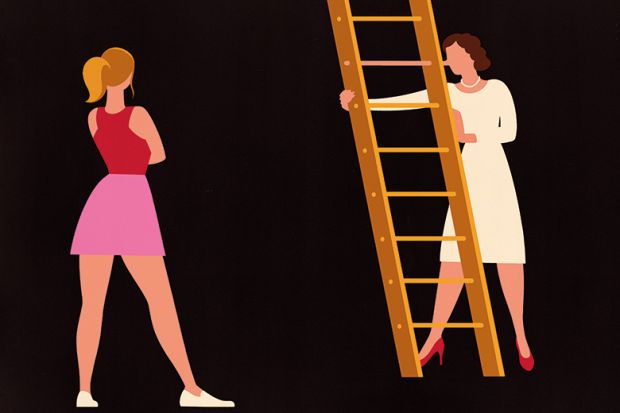Over two and a half centuries, Americans built many paths to wealth and success, embraced failure and believed in second chances. But the unfolding college admissions scandal shows all of that eroding, with opportunities perceived to have narrowed so much that even the most advantaged resort to cheating.
It’s a development that’s also troubling to people beyond the US, who are striving not just to become as wealthy and successful as Americans, but to do it with the same sunny optimism and unbounded drive.
One close friend to the US, South Korea, shows the risk for Americans. Its shining success, rising from poverty in the 1960s to become one of the 15 wealthiest countries today, happened in a fashion that has instilled extremely narrow ideas about the way up. Cheating, corruption and bitterness abound at all the key turning points in education and career development.
It is hard to find another country that puts so much emphasis on education as South Korea. Today, it boasts the highest college education enrolment rate in the world, an amazing feat considering that even primary schooling was not universal before the Korean War.
This feverish pursuit of university places has given rise to a pervasive shadow education market. Spending on expensive cram schools, private tutors and even overseas study is high not just among the rich but also among ordinary, middle-class Koreans. Nearly 70 per cent of households with children participate in the shadow education market, and household debt related to education spending is rising.
It is all designed to prepare students for the country’s college entrance exam, notoriously referred to as the one-chance exam. A student’s score in that, more than any other factor, determines where they can attend college. And where a student attends college matters because it, in turn, is the single most important factor in determining a student’s chances of economic prosperity – not just in the short-term but throughout their life. In many prestigious workplaces, a job offer is a lifetime opportunity, with tightly knit alumni networks helping to usher in younger peers from their colleges. So it is no surprise that the country’s leaders in business, politics and academia disproportionately graduate from the highest-ranked schools.
South Koreans who don’t attend an elite university have a much harder time. While nearly everyone graduates from college, about 10 per cent of young people are unemployed, and a greater proportion are chronically underemployed. Hence, students – and their anxious parents – will pay whatever they can to gain admittance to a top university. The benefit of attending is high, and the cost of not attending is painfully higher.
The US has a long way to go to reach that extreme. Only about half of Americans currently graduate from college. And the quality of undergraduate education is far more consistent in the US than it is South Korea – as are prospects for graduate school and the jobs market. Even so, admissions criteria are becoming more demanding. The Ivy League universities and other elite private schools are notorious for their selective admissions rates and standards. And even select public universities, such as the University of California’s Berkeley and Los Angeles campuses, receive more than 100,000 applications each year, and admit a small percentage from an outstanding pool.
As a result, many American students jostle for admission to select colleges and universities with the help of test prep programmes and personal consultants, while padding their résumés with expensive hobbies, fuelled by parental anxiety and money. That is one reason why it is so distressing that millionaire actors felt the urge to cheat on college admissions. Even the richest Americans are beginning to internalise the South Korean notion that there is only one path to socio-economic success.
Different presidential administrations in South Korea have experimented with a number of policies to curb the extreme competition around education, but they have had little success. They have tried to limit the number of hours students can attend cram schools, for instance. But none has attempted to break the grip of alumni networks, change lifetime employment practices or improve labour mobility – things that would convince South Koreans that there really are second chances in life.
There are more than 5,000 higher education institutions in the US, ranging from community colleges to the Ivy League. It is a diversity that reflects the country itself. But the system’s real strength lies in Americans’ faith that any of those institutions can lead to greater opportunities and success, and that second chances can be followed by third and fourth chances even if you studied at the humblest local college.
If Americans lose that faith, so will the world.
Stephanie K. Kim is faculty director of higher education administration at the Georgetown University School of Continuing Studies.
POSTSCRIPT:
Print headline: Even America's rich worry that the path to success is narrowing
Register to continue
Why register?
- Registration is free and only takes a moment
- Once registered, you can read 3 articles a month
- Sign up for our newsletter
Subscribe
Or subscribe for unlimited access to:
- Unlimited access to news, views, insights & reviews
- Digital editions
- Digital access to THE’s university and college rankings analysis
Already registered or a current subscriber? Login







